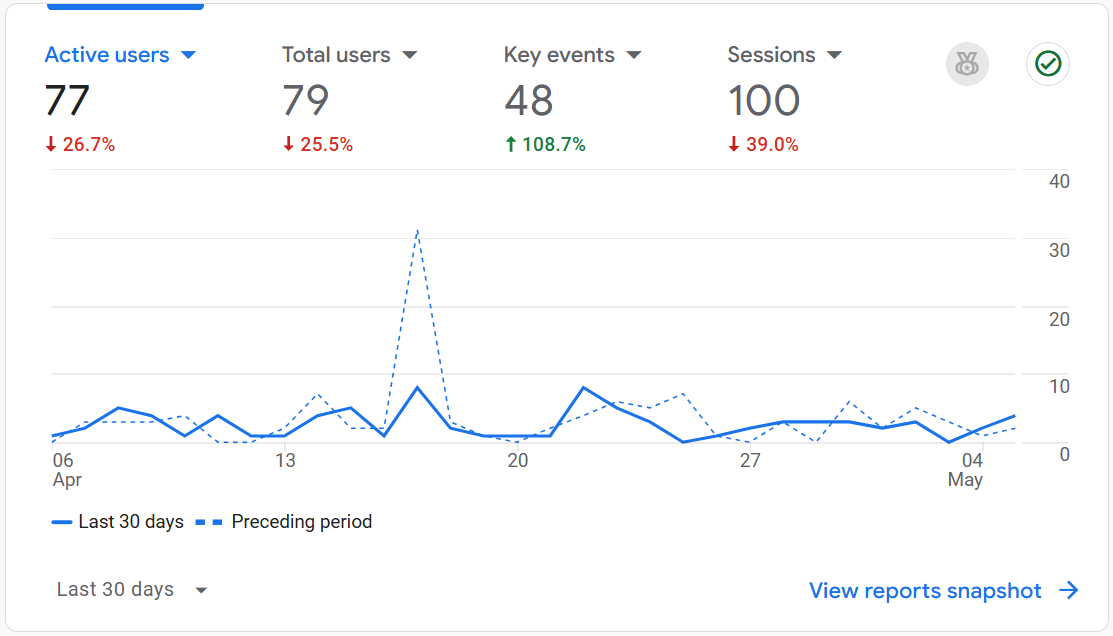In Google Analytics 4 (GA4), two of the most important metrics for understanding how users interact with your site or app are active users and total users. While they may sound similar, each metric tells a different story—one about engagement, the other about reach.
Grasping the difference between active and total users is key to interpreting your audience’s behavior accurately. In this post, we’ll explain what each metric means in GA4, how they’re calculated, and why they matter for your digital strategy.
What are Active Users in GA4?
In Google Analytics 4, active users refers to the number of unique users who engage meaningfully with your website or app during a specified data range. This metric focuses on interaction—not just visits.
GA4 defines an active user as someone who:
- Has an engaged session (a session that lasts more than 10 seconds, includes a conversion event, or views 2 or more pages), or
- Is a new user (which GA4 identifies by the triggering of one of these events: first_visit for websites or first_open for mobile apps)
This metric helps you to understand true audience engagement including how many users are actively interacting with your site and how many are visiting for the first time.
What are Total Users in GA4?
In Google Analytics 4, total users refers to the number of unique users who visited your website or app during a specified date range.
This metric offers a broad view of your site or app’s reach. It tells you how many people your marketing efforts or organic visibility brought in, regardless of whether those visitors stuck around or interacted with your content in a meaningful way. Total users helps you to understand your overall audience size and traffic trends over time.
Want to go even deeper into how GA4 defines users? See the official GA4 user metrics documentation.
Comparing Active Users and Total Users
Understanding the difference between active users and total users helps you move beyond raw traffic numbers to get a clearer picture of how your audience interacts with your website or app. While total users tells you how many people arrived, active users tells you how many of them actually engaged.

By comparing the two, you can uncover insights that inform smarter decisions across areas like:
- Marketing Effectiveness – If you’re seeing high total users but low active users, it could mean your campaigns are generating traffic but that traffic isn’t sticking. This insight can help you revisit your targeting, messaging, or landing pages.
- Content Strategy – A high percentage of active users suggests your content is relevant and engaging. On the flip side, if only a small portion of your visitors are active, it might be time to evaluate whether your content aligns with user needs.
- User Experience – A low active-to-total user ratio can also point to usability issues. Maybe your site loads slowly, is hard to navigate, or doesn’t work well on mobile. Identifying and fixing these issues can increase both engagement and conversions.
- Audience Segmentation – Break down active vs. total users by traffic source, device, or geography to identify which audiences are most engaged. This can help you refine your targeting, prioritize high-performing channels, and tailor experiences for different user groups.
Conclusion
Understanding the difference between total users and active users in GA4 gives you a more complete view of how your audience behaves—from who shows up to who actually engages. These insights can help you make smarter decisions about your marketing, content, and user experience strategies.
By keeping an eye on both metrics and how they compare, you’ll be better equipped to grow your traffic and impact.
Want help making the most of your GA4 data? Explore our Google Analytics consulting services to see how we can support your team.

